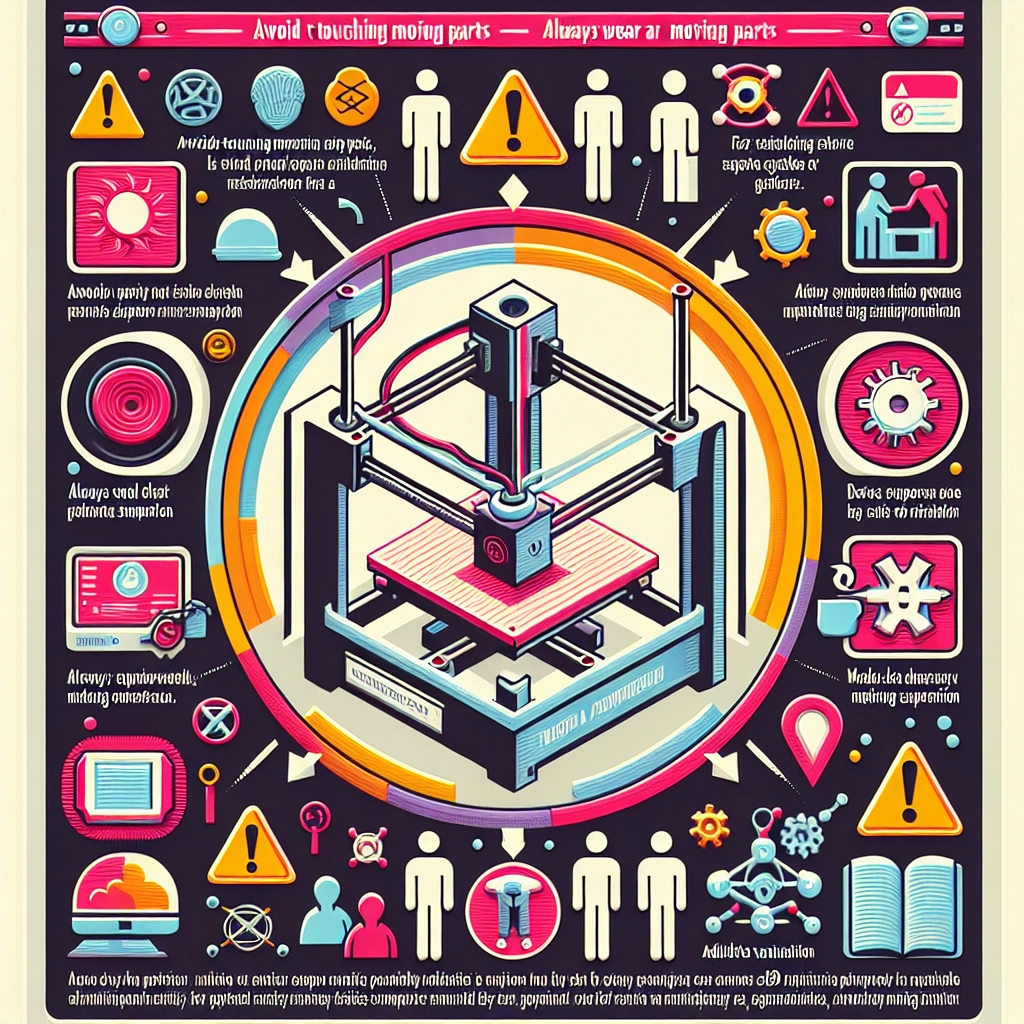3D Printing Safety Tips: What You Need to Know
3D printing is a fascinating technology that has captured the imagination of hobbyists, engineers, and businesses alike. The ability to design and create physical objects from a simple digital file is nothing short of revolutionary. However, before you dive into the exhilarating world of 3D printing, it’s essential to understand that, like any technology, it comes with its own set of risks and safety concerns. Whether you’re a seasoned pro or a complete newbie, here are some crucial 3D printing safety tips to keep in mind.
Know Your Materials
First things first, understanding the materials you’re working with is fundamental. Many 3D printing filaments, like PLA (polylactic acid) and ABS (acrylonitrile butadiene styrene), have different properties and safety considerations. PLA is plant-based and generally considered safer and more environmentally friendly. However, ABS, while more durable, can emit harmful fumes when heated.
Always check the Safety Data Sheet (SDS) for the materials you’re using. It will provide information on potential hazards, handling, and recommended safety practices. If you’re using less common materials—like resin for SLA printing—be extra cautious, as they often require more stringent safety measures.
Ventilation is Key
One of the most important safety tips for 3D printing is to ensure proper ventilation in your workspace. When certain materials are heated, they can release fumes that may be harmful to inhale. Printing in a well-ventilated area will help disperse these fumes and minimize your exposure. If your workspace lacks sufficient airflow, consider investing in a fume extractor or using an enclosure that has proper ventilation.
Personal Protective Equipment (PPE)
While it may seem overly cautious, wearing personal protective equipment is wise during your 3D printing sessions. This might include safety goggles, gloves, and a dust mask, particularly if you’re dealing with powders or resins. If using filaments like Nylon, which can create fine dust particles, wearing a mask could prevent respiratory irritation.
Also, keep safety gloves handy, especially if you plan to handle hot components post-print. Those prints can reach temperatures well above what we consider safe, and touching a hot nozzle or bed can lead to painful burns.
Handle Equipment Safely
Operating a 3D printer might seem straightforward, but it’s important to familiarize yourself with the machine’s components and operation before diving in. Ensure you understand how to start, pause, and stop prints, plus what to do in case of a malfunction.
Regular maintenance is equally important. Dust and debris can accumulate in the printer and pose hazards or affect print quality. Make a habit of cleaning your machine, checking for wear and tear, and securing all wiring and components to prevent accidents.
Be Cautious with Heated Elements
Most 3D printers have heated beds and extruders, which can reach high temperatures rapidly. Be mindful of these elements when the machine is operating. Always exercise caution and avoid contact with these heated components. Allow your printer to cool down after a print job before you attempt any maintenance or changes, giving you one less thing to worry about.
Keep Your Workspace Organized
An organized workspace isn’t just good for productivity; it’s also essential for safety. Make sure materials and tools have designated places and that your work area is free from clutter. This will minimize the risks of tripping, knocking things over, or having materials spill, which could result in hazardous situations.
Kids and Pets
If you have kids or pets, consider their safety in your 3D printing space. The allure of a whirring machine and colorful plastic can be tempting, but it’s vital to keep your workspace off-limits to curious hands and paws. If you can’t set up a dedicated space, a sturdy enclosure or safety gate can help safeguard your equipment and finished products.
Staying Informed
Finally, the world of 3D printing is ever-evolving, and so are best practices and safety protocols. Stay informed by joining online communities, following industry news, and participating in forums. The more you know, the better equipped you’ll be to navigate your 3D printing journey safely.
With these tips in your toolkit, you should now feel better prepared to tackle all the exciting projects that await you in the world of 3D printing. Remember, a little knowledge and awareness can go a long way in ensuring you have a safe and enjoyable printing experience. Dive in, create, and enjoy the limitless possibilities, but always prioritize safety first! Happy printing!

